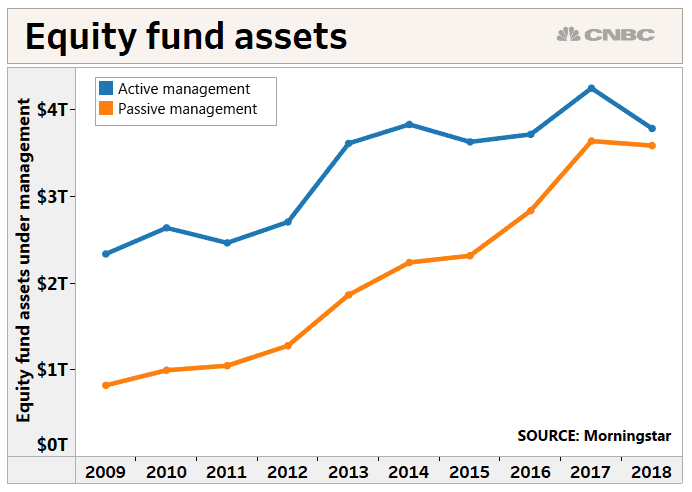
Although Social Security’s COLA might achieve something unprecedented in nearly 30 years, this historic benefit increase is likely to fall short for millions of retirees in the United States of America.
As of June 2024, more than 50 million retired citizens who got a monthly payment from Social Security were entitled to an average of $1,918. This translates to a bit more than 23,000 dollars in 2024. While this may not seem like a substantial amount, Social Security income has been crucial for decades in helping retirees meet their financial needs.
Social Security benefits are key in 2024
Beyond being a primary retirement program, Social Security played a significant role in lifting 22.7 million people above the federal poverty line in 2022, including 16.5 million adults aged 65 and over. For 23 years, annual surveys conducted by Gallup have consistently shown that 80% to 90% of retirees rely on their monthly payouts to cover expenses in some capacity.
- The average monthly Social Security benefit is $1,918.28.
- Social Security income is essential for many retirees, helping them make ends meet.
- Social Security lifted 22.7 million people above the poverty line in 2022.
- Gallup surveys reveal that 80% to 90% of retirees depend on these benefits to some extent.
While the upcoming COLA increase might be historic, it’s important to recognize that it may not be enough to fully address the financial challenges faced by most retirees.
For countless individuals, their monthly Social Security check serves as a vital lifeline, making the annual cost-of-living adjustment (COLA) announcement in October a highly anticipated event. Although projections indicate that Social Security’s COLA for 2025 will be historically significant, beneficiaries may still find themselves disheartened.
Social Security’s COLA Crucial for Retirees
As a buyer, you’re undoubtedly aware that the cost of goods and services isn’t static—it fluctuates over time. The primary function of Social Security’s COLA is to track these price changes across a wide array of goods and services and make annual adjustments to benefits. This ensures that recipients maintain their purchasing power and can keep up with inflation.
A Brief History of Social Security’s COLA
Before 1975, the timing of these adjustments was erratic and unpredictable. From 1940 to 1974, special sessions of Congress approved only 11 COLAs. Remarkably, none were passed during the entire decade of the 1940s.
Understanding the Importance
The cost-of-living adjustment is not just a routine change; it’s a critical mechanism that helps retirees and other Social Security beneficiaries cope with rising living costs. Without it, many could struggle to afford basic necessities as prices increase.
While the upcoming COLA for 2025 is expected to be significant, reflecting the current inflationary trends, it’s essential to manage expectations. Even a historic adjustment might not fully alleviate the financial pressures recipients face.
Since 1975, America’s leading retirement program has relied on the Consumer Price Index for Urban Wage Earners and Clerical Workers (CPI-W) to measure annual inflationary changes.
The CPI-W encompasses more than half a dozen major spending categories, along with numerous subcategories, each with its own individual weightings. These percentage weightings allow the CPI-W to be represented as a single figure each month, making it easy to compare with previous months or years.
Understanding the CPI-W and Social Security’s COLA Calculation
When calculating Social Security’s cost-of-living adjustment (COLA), only the trailing-12-month CPI-W readings from the third quarter (July through September) are considered. While the final readings from the other nine months can help identify price trends, they are not used in the COLA calculation.
The Role of the Third Quarter CPI-W in COLA Calculation
If the average CPI-W reading from the third quarter of the current year is higher than the average CPI-W reading from the same period the previous year, it indicates that inflation (rising prices) has occurred. When prices rise, Social Security benefits increase as well.
The year-over-year percentage increase in the average third-quarter CPI-W, rounded to the nearest tenth of a percent, determines the amount by which benefits will rise in the coming year.
To summarize, the CPI-W plays a crucial role in ensuring that Social Security benefits keep pace with inflation, helping to maintain the purchasing power of retirees. By focusing on the third-quarter readings, the system provides a clear and consistent method for calculating annual adjustments.
Thanks to an above-average rate of inflation, Social Security’s last three COLAs have been significant. US Inflation Rate data by YCharts.
Social Security’s 2025 Projections After COLA
Over the past 15 years, Cost-of-Living Adjustments (COLAs) for Social Security have often been minimal or non-existent. For instance, there was no COLA in 2010, 2011, and 2016. In 2017, beneficiaries received the smallest positive COLA on record at just 0.3%. In fact, 10 of the last 15 COLAs have been 2% or lower.
However, the trend has shifted dramatically in recent years. In 2022, 2023, and 2024, Social Security checks increased by 5.9%, 8.7%, and 3.2%, respectively. The 8.7% COLA in 2023 marked the largest percentage increase in 41 years and the most substantial nominal-dollar boost to monthly benefits since the program began.
Recent Increases in Social Security COLAs
- 2022: 5.9% increase
- 2023: 8.7% increase
- 2024: 3.2% increase
Each of these recent adjustments reflects a significant boost in benefits, driven by higher-than-average inflation rates. As we look ahead to 2025, many are hopeful that this trend will continue, providing further financial relief to Social Security beneficiaries.
Following the release of the June inflation report from the U.S. Bureau of Labor Statistics, estimates for Social Security’s 2025 Cost-of-Living Adjustment (COLA) have been refined. According to The Senior Citizens League (TSCL), a nonpartisan senior advocacy group, benefits are expected to rise by 2.63% in 2025 (rounded to 2.6%).
Forecasts from Leading Analysts
Independent Social Security and Medicare policy analyst Mary Johnson, who recently retired from TSCL, has projected a slightly higher forecast for the 2025 COLA at 2.7%.
Historical Context of COLA Adjustments
Although both estimates are lower than the cost-of-living adjustments seen in the previous three years, they will still be historically significant. It has been 28 years since recipients enjoyed a COLA of at least 2.6% for 4 years in a row and 32 years since payments hikes have totaled at least 2.7% in four straight years.
What Do These Percentages Mean for Retirees?
Discussing percentages is one thing, but understanding what these figures mean in terms of actual dollars in the hands of retirees is an entirely different matter. Let’s break it down:
- Increased Monthly Benefits: A 2.6% or 2.7% increase in COLA will directly translate into higher monthly checks for Social Security beneficiaries.
- Better Coping with Inflation: Even a modest increase can help retirees better manage the rising costs of goods and services.
- Long-Term Impacts: Consistent COLA increases over several years can substantially improve the financial well-being of retirees.
In conclusion, while the projected COLA percentages for 2025 might seem modest, their historical significance and impact on retirees’ financial health should not be underestimated. These adjustments are crucial for helping our senior community maintain their purchasing power in an ever-changing economic landscape.
For approximately 51.2 million retired-worker beneficiaries, a 2.6% to 2.7% COLA in 2025 would boost their monthly payout by $49.88 to $51.79. This means that the average retired worker direct deposits or checks will hover close to, but still remain below, $2,000 per month.
In comparison, the 7.2 million workers with disabilities and 5.8 million survivor beneficiaries would see their monthly checks increase by $39.98 to $41.52 and $39.20 to $40.71, respectively, if the COLA is set at 2.6% or 2.7%.
Social Security’s COLA Disadvantges
On the surface, most retirees might feel pleased with a fourth consecutive year of above-average COLAs. However, if you dig deeper and analyze the factors driving these increases, you’ll discover a troubling reality.
The Hidden Downside of Higher COLAs
While a higher COLA might seem beneficial, the underlying reasons for these increases reveal a worst-case scenario for retirees:
- Inflation: The primary driver of higher COLAs is often rising inflation, which erodes purchasing power.
- Cost of Living: Essential expenses such as healthcare, housing, and food typically rise faster than the COLA adjustment.
- Fixed Income Strain: Many retirees rely on a fixed income, and even a small increase in costs can significantly impact their financial stability.
Understanding these factors can help retirees better prepare and manage their finances, even as Social Security’s annual adjustments continue to fall short of covering real-world expenses.
When it comes to spending habits, seniors and working-age Americans exhibit distinct differences. While younger adults typically allocate a higher portion of their monthly budgets to education, apparel, and transportation expenses, retirees tend to spend more on shelter and medical-care services compared to the average working-age individual.
Understanding the CPI-W and Its Impact
The CPI-W (Consumer Price Index for Urban Wage Earners and Clerical Workers) has been the benchmark for measuring price changes related to Social Security for nearly half a century. This index tracks the spending habits of “urban wage earners and clerical workers,” who are generally working-age adults. It’s important to note that many of these individuals are not recipients of Social Security benefits.
The Disconnect Between Seniors and the CPI-W
In stark contrast, a significant 86% of Social Security’s almost 68 million recipients are aged 62 and over. This disparity means that seniors can’t rely on the CPI-W to accurately reflect the inflation they face. The index, designed to calculate the program’s Cost of Living Adjustment (COLA), primarily focuses on the spending patterns of working-age Americans, thereby overlooking the unique financial challenges experienced by retirees.
Key Differences in Spending
- Younger Adults: Higher spending on education, apparel, and transportation.
- Retirees: Increased spending on shelter and medical-care services.
Understanding these differences is crucial for recognizing the financial realities faced by different age groups. As we continue to navigate economic changes, it’s essential to consider how these spending habits impact both the younger and older populations.
Retirees are facing a significant challenge as shelter inflation remains persistently high, and medical-care services inflation has surged in recent months. According to the Consumer Price Index for All Urban Consumers (CPI-U) in June, the trailing 12-month inflation rates for shelter and medical-care services were 5.2% and 3.3%, respectively. Even if Social Security’s 2025 Cost-of-Living Adjustment (COLA) matches Mary Johnson’s forecast of 2.7%, it would still lag behind the inflation rates impacting the most crucial expense categories for retirees.
The Impact of Shelter and Medical-Care Inflation
If the inflation rates for shelter and medical-care services continue to outpace the projected 2025 COLA, it will result in a significant loss of purchasing power for most Social Security beneficiaries. This situation would extend the ongoing trend of diminishing buying power for Social Security income, a trend that has persisted since the beginning of the century.
- Shelter Inflation: At 5.2%, shelter inflation is a major concern for retirees who rely heavily on Social Security income.
- Medical-Care Services Inflation: The 3.3% inflation rate for medical-care services adds another layer of financial strain.
- COLA Forecast: A projected 2.7% increase in Social Security COLA for 2025 may not be sufficient to cover these rising costs.
What This Means for Retirees
For many retirees, the higher rates of inflation in shelter and medical-care services mean that their Social Security benefits will not stretch as far as they used to. This ongoing erosion of buying power makes it increasingly difficult for retirees to manage their expenses, particularly in the areas that are most essential to their well-being.
Understanding these trends is crucial for those planning their retirement finances and for policymakers striving to protect the financial stability of our aging population.























